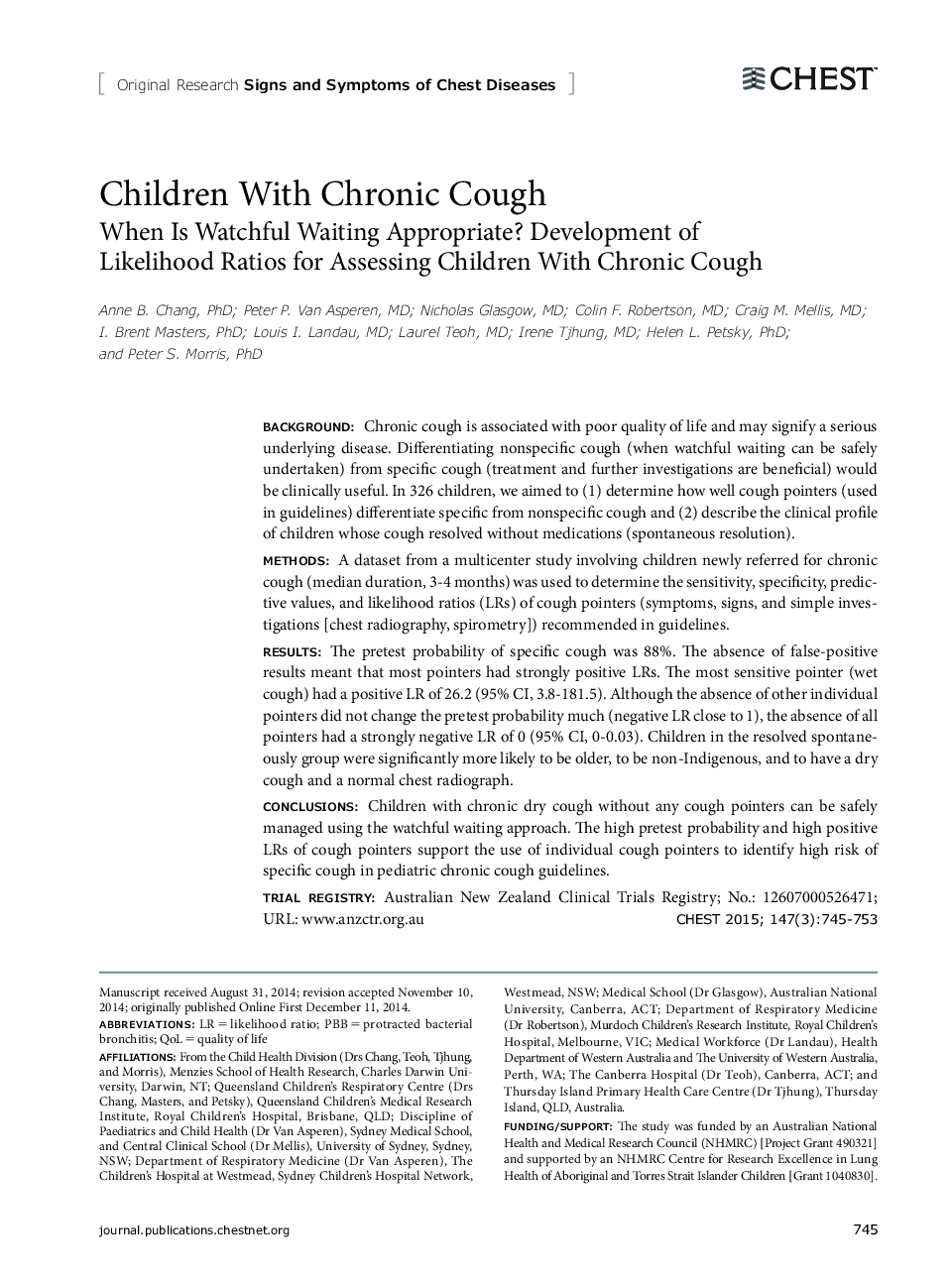| Article ID | Journal | Published Year | Pages | File Type |
|---|---|---|---|---|
| 2899766 | Chest | 2015 | 9 Pages |
BACKGROUNDChronic cough is associated with poor quality of life and may signify a serious underlying disease. Differentiating nonspecific cough (when watchful waiting can be safely undertaken) from specific cough (treatment and further investigations are beneficial) would be clinically useful. In 326 children, we aimed to (1) determine how well cough pointers (used in guidelines) differentiate specific from nonspecific cough and (2) describe the clinical profile of children whose cough resolved without medications (spontaneous resolution).METHODSA dataset from a multicenter study involving children newly referred for chronic cough (median duration, 3-4 months) was used to determine the sensitivity, specificity, predictive values, and likelihood ratios (LRs) of cough pointers (symptoms, signs, and simple investigations [chest radiography, spirometry]) recommended in guidelines.RESULTSThe pretest probability of specific cough was 88%. The absence of false-positive results meant that most pointers had strongly positive LRs. The most sensitive pointer (wet cough) had a positive LR of 26.2 (95% CI, 3.8-181.5). Although the absence of other individual pointers did not change the pretest probability much (negative LR close to 1), the absence of all pointers had a strongly negative LR of 0 (95% CI, 0-0.03). Children in the resolved spontaneously group were significantly more likely to be older, to be non-Indigenous, and to have a dry cough and a normal chest radiograph.CONCLUSIONSChildren with chronic dry cough without any cough pointers can be safely managed using the watchful waiting approach. The high pretest probability and high positive LRs of cough pointers support the use of individual cough pointers to identify high risk of specific cough in pediatric chronic cough guidelines.TRIAL REGISTRYAustralian New Zealand Clinical Trials Registry; No.: 12607000526471; URL:www.anzctr.org.au
